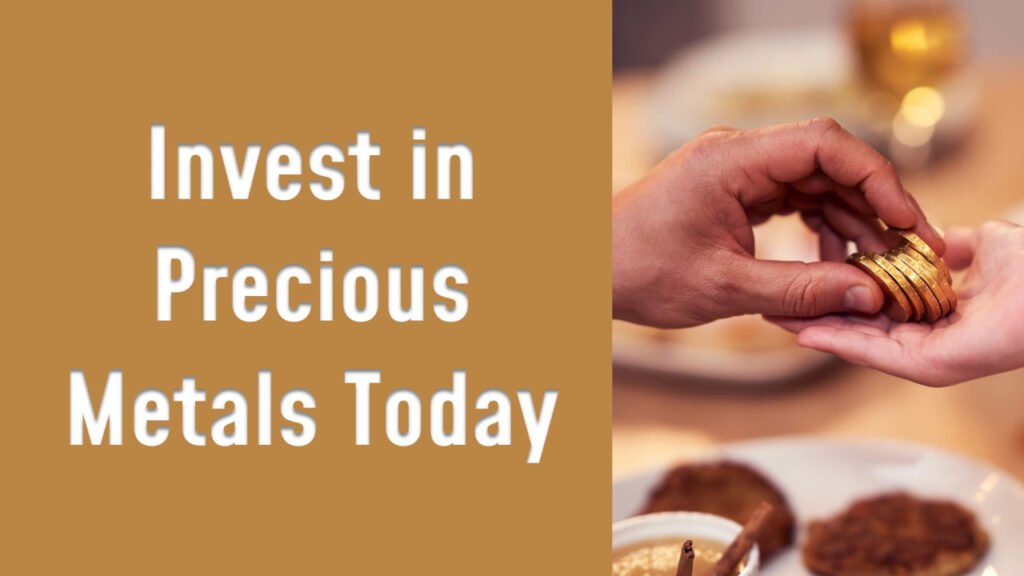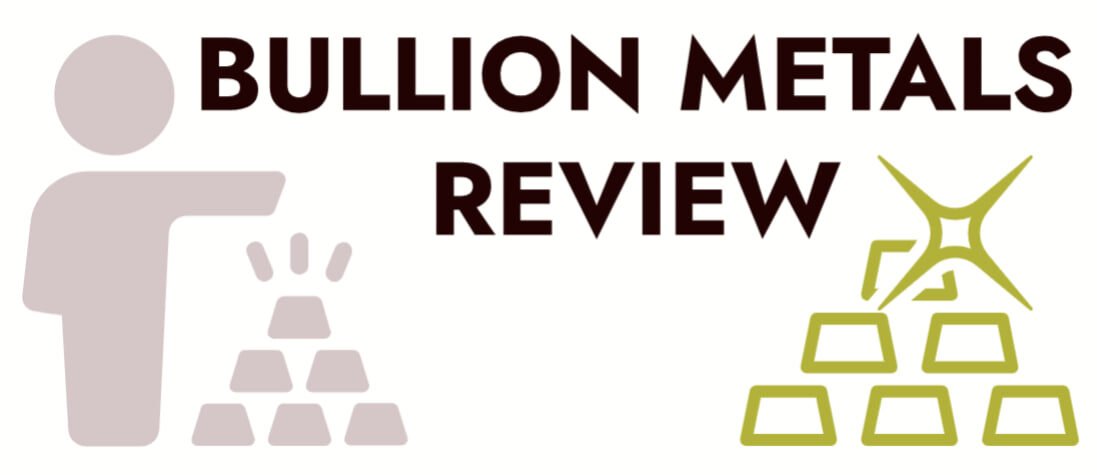How to Invest in Precious Metals: A Comprehensive Guide for Beginners and Experienced Investors
Investing in precious metals has been a time-tested strategy for preserving wealth and diversifying portfolios. For centuries, gold, silver, platinum, and palladium have been coveted not only for their industrial uses but also as a hedge against inflation, economic uncertainty, and currency fluctuations. In this guide, we’ll walk you through the ins and outs of how to invest in precious metals, highlighting the best options available and the strategies that can help you succeed.

Sign Up Today For FREE CLICK HERE
Why Invest in Precious Metals?
Before diving into the specifics, it’s important to understand why invest in gold and silver—and other precious metals like platinum and palladium. Precious metals provide a level of security that other assets simply can’t. Here’s why:
- Hedge Against Inflation: Precious metals have historically maintained or even increased in value during periods of inflation, making them an excellent store of wealth when fiat currencies lose purchasing power.
- Safe-Haven Assets: In times of economic or geopolitical instability, precious metals tend to outperform stocks and other riskier assets. Investors flock to these metals when markets experience volatility.
- Diversification: Adding metals to your investment portfolio can reduce risk by diversifying your asset allocation. They tend not to move in tandem with equities, bonds, or real estate.
- Intrinsic Value: Unlike paper currencies or even cryptocurrencies, precious metals have intrinsic value due to their rarity and practical industrial applications.
Beginner’s Guide to Precious Metals Investing
For those new to the world of metals, here’s a beginner’s guide to precious metals investing. The first step is to determine what type of precious metal best fits your investment strategy. Precious metals can be divided into four main categories: gold, silver, platinum, and palladium.
Gold
Gold is the king of precious metals. It has been a store of value for thousands of years and remains the most popular option for investors today. Gold’s appeal comes from its durability, liquidity, and widespread recognition.
- Best for: Long-term wealth preservation, inflation hedge, and safe-haven asset.
- Forms of Investment: Physical gold (bars, coins), gold ETFs (Exchange-Traded Funds), mining stocks, and gold futures.
Silver
Silver, often seen as gold’s younger sibling, has a much lower price point but also offers a hedge against inflation. It also has significant industrial applications, from electronics to renewable energy technologies.
- Best for: Growth potential, industrial demand, and lower entry price.
- Forms of Investment: Physical silver (bars, coins), silver ETFs, mining stocks, and silver futures.
Platinum and Palladium
While less commonly discussed, platinum and palladium also offer investment opportunities. Both metals are primarily used in the automotive industry for catalytic converters, but they have been gaining attention as investment options due to supply constraints.
- Best for: Industry-driven demand and scarcity.
- Forms of Investment: Physical platinum and palladium, ETFs, mining stocks, and futures.
Best Precious Metals for Investment
Choosing the best precious metals for investment depends on your financial goals. For most investors, gold and silver are the top picks, given their established market and liquidity. Platinum and palladium, though more volatile, can be lucrative options due to their industrial demand. Here’s a comparison of their strengths:
- Gold: Best for stability and long-term growth.
- Silver: Best for industrial demand and short-term price movements.
- Platinum and Palladium: Best for investors looking for higher risk and potential reward tied to industrial use.
Gold and Silver Investment Strategies
Once you’ve decided on the metals, it’s essential to develop a robust plan. Here are some effective gold and silver investment strategies that you can adopt, whether you’re a novice or a seasoned investor:
1. Dollar-Cost Averaging
Buying small amounts of gold or silver at regular intervals (monthly or quarterly) can help mitigate risk and smooth out market volatility. This is known as dollar-cost averaging and prevents you from investing a large sum all at once at potentially high prices.
2. Physical Metals vs. Paper Assets
Many investors struggle with the decision of whether to buy physical metals or invest in financial products tied to them. Physical gold vs. gold ETFs, for example, is a frequent debate. While ETFs provide easier access and liquidity, physical metals ensure ownership and remove counterparty risk.
3. Rebalancing Your Portfolio
As prices of metals fluctuate, it’s important to periodically rebalance your portfolio. If gold or silver becomes too large a portion of your investments, you may need to sell some holdings and reinvest elsewhere to maintain a balanced strategy.
Sign Up Today For FREE CLICK HERE
4. Bullion vs. Coins
When investing in silver, one key choice is silver coins vs. silver bullion for investment. Coins typically carry a premium due to their collectibility, while bullion bars have lower premiums and are a better option if you’re focused purely on value.
Precious Metals vs. Stocks for Investment
A common question from new investors is how precious metals compare to traditional investments like stocks. In a precious metals vs. stocks for investment debate, it’s crucial to understand that metals often act as a counterbalance to stock market volatility. When stocks rise, metals may underperform, and vice versa. Here’s why they make an ideal complementary asset:
- Stocks: Offer growth potential through capital appreciation and dividends but are susceptible to market downturns.
- Precious Metals: Provide stability and act as a hedge during economic downturns, protecting your portfolio when stocks are volatile.
Best Ways to Invest in Platinum and Palladium
Although platinum and palladium are less well-known than gold and silver, they have unique investment benefits due to their industrial uses, especially in automotive production. The best ways to invest in platinum and palladium are:
- Physical Bars and Coins: Similar to gold and silver, physical platinum and palladium can be purchased in the form of bars or coins. However, they tend to have higher premiums and are less liquid.
- Exchange-Traded Funds (ETFs): ETFs provide exposure without the need to physically store the metals. Platinum and palladium ETFs track the price of these metals and offer ease of access.
- Mining Stocks: Investing in companies that mine platinum and palladium is another way to gain exposure. However, this comes with additional risks tied to the mining industry.
Long-Term Benefits of Precious Metals Investment
When thinking about precious metals, it’s important to understand the long-term benefits of precious metals investment. These include:
- Preservation of Wealth: Gold, silver, and other precious metals have historically preserved wealth over centuries, even millennia. They provide protection during times of economic instability and currency devaluation.
- Inflation Hedge: With inflation concerns growing globally, precious metals are an ideal way to protect your purchasing power.
- Portfolio Diversification: Precious metals often move independently of traditional asset classes like stocks and bonds, making them a valuable diversification tool.
How to Protect Wealth with Precious Metals
For those looking to secure their financial future, understanding how to protect wealth with precious metals is essential. Here are some tips to maximize your protection:
- Allocate Wisely: A general rule of thumb is to allocate 5-10% of your portfolio to precious metals. This provides enough protection without overexposing your portfolio to the volatility of metal prices.
- Choose Physical Metals: Holding physical gold and silver provides ultimate control and protection from economic and geopolitical risks. Safely storing these metals in a secure vault or home safe is critical.
- Hold for the Long Term: Precious metals are best viewed as long-term investments. Their value appreciates over time, particularly during periods of uncertainty.
Conclusion
Investing in precious metals offers a way to protect your wealth, hedge against inflation, and diversify your portfolio. Whether you’re just getting started or refining your investment strategy, gold, silver, platinum, and palladium can all play a valuable role in your financial plan. By following this guide and carefully considering how to invest in precious metals, you’ll be well-positioned to achieve long-term financial security.
Open a FREE Bullion Vault account today with no obligation to trade! *BONUS* Sign up now and receive a risk-free 1/8 oz (4g) of silver to kickstart your journey into precious metals investing





I am extremely impressed with your writing skills and also with the layout on your weblog.
Is this a paid theme or did you customize it yourself?
Either way keep up the nice quality writing, it is rare to
see a great blog like this one these days.
I am no longer sure the place you’re getting your info, however great topic.
I must spend some time studying more or understanding
more. Thank you for magnificent info I used to be searching for
this information for my mission.